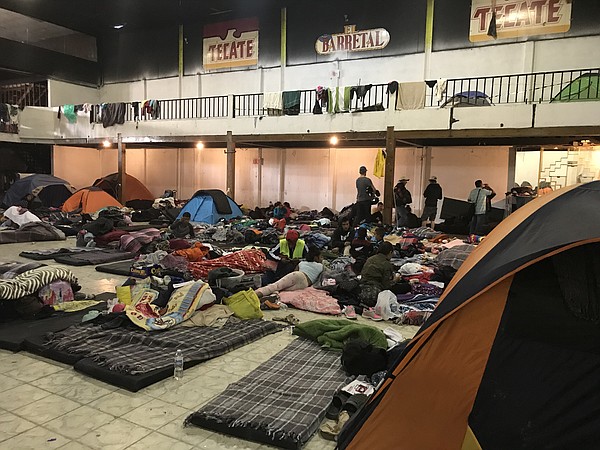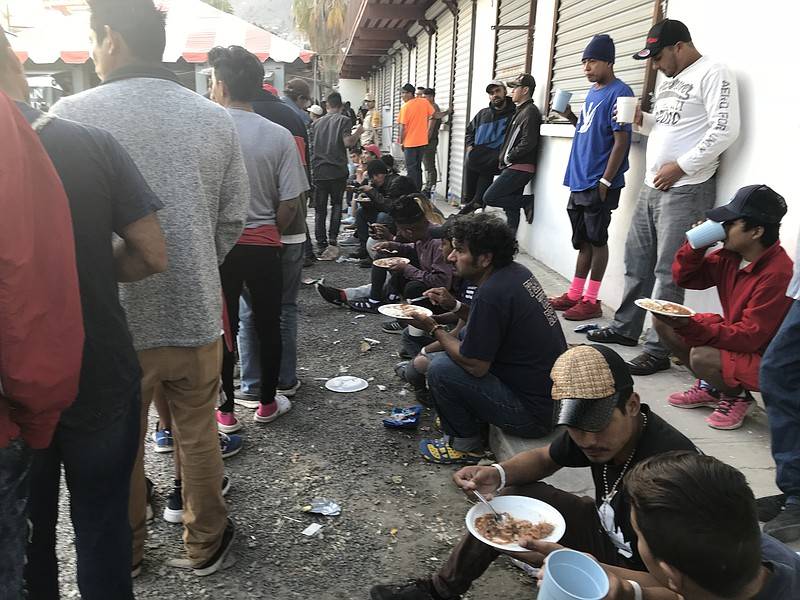Mexican officials are moving some Central American migrants arriving in Tijuana as part of the caravan to a new government-run shelter, after rains flooded the sports facility where many had been staying.
The new site, an abandoned concert hall in eastern Tijuana called Barretal, has a capacity for 7,500 people. It’s not yet half full.
Migrants say it’s better than the previous overcrowded municipal sports facility. It's spacious, with a parking lot where people can bring donated clothing and food, and closed areas that provide shelter from the rain.
But there’s a downside: The facility is a 30-minute drive from the San Ysidro Port of Entry, where people who want to request asylum in the United States must put their names on a waitlist, and check in periodically to see if it’s their turn.
Most people have no idea how to get to the port from Barretal.
Manuel Antonio Lopez, a 54-year-old Honduran who says he received death threats at home, put his name on the asylum waitlist while staying at the old shelter, a short walk from the port. He was given a number on a scrap of notebook paper: 1,479.
"I haven’t gone back since I got here, I don’t know the status of the list, if it’s my turn yet, I don’t know," he says.

